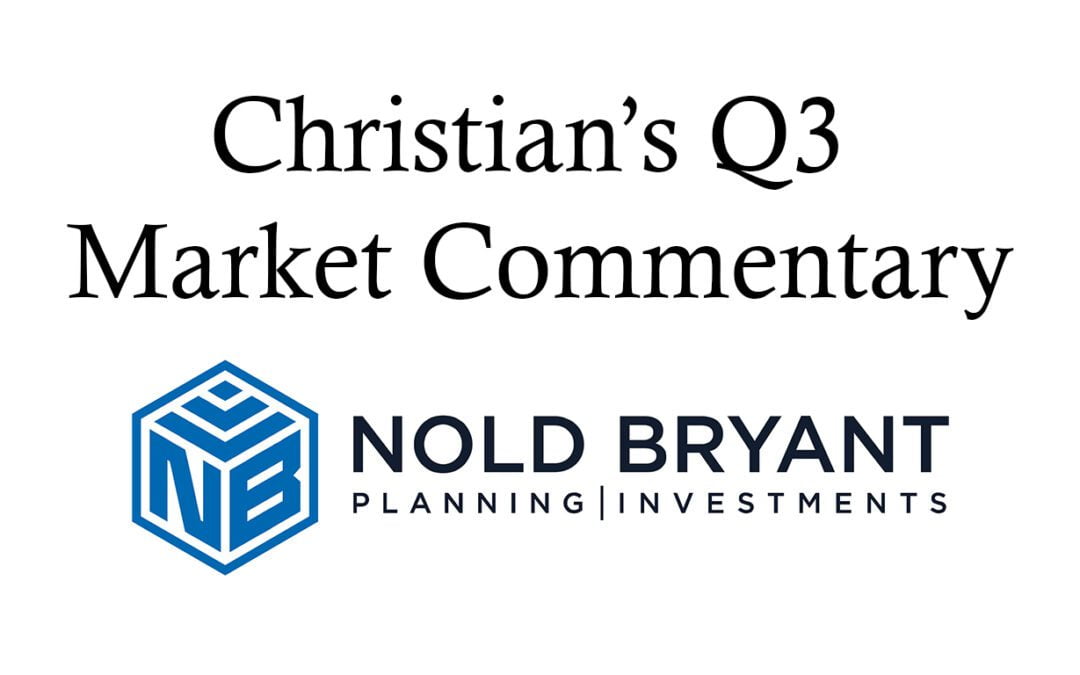Do you remember where you were when the clock struck midnight signaling the end of the 20th century and start of the 21st? Perhaps, like some of us, you were glued to the TV anxiously wondering if the new millennium would bring some insanity – minor computer errors or even a computer-induced apocalypse, perhaps? In the minutes that followed, when the predicted apocalypse didn’t materialize, how long did it take you to feel confident that the danger had passed? I’m guessing at 12:01 you weren’t ready to feel relieved yet, but perhaps in the days that followed, as everything seemed to be normal, you were able to breathe deeply as no major disruption had occurred, and life would go on as before.
There are some definite differences that I will point out later, but in some ways, the 4th quarter of 2022 and the 1st half of 2023 have felt like those moments in early 2000. At the end of Q3 2022, The Confidence Board estimated the probability of a recession at 96% and Ned Davis Research’s estimate was 98%. Yet here we sit at the start of Q3 2023, with the S&P 500 up double digits, unemployment near all-time lows, and GDP stabilizing in firmly positive territory.
To be clear, last year was incredibly painful, particularly with bonds having one of their worst years in history. However, the truly dire scenario that was almost universally predicted, has not materialized. Is this just 12:01 on January 1st, 2000, and it’s too early to know what still might happen, or are we clear of the danger? I’d like to look at a few of the important data points and stories to help us answer that question.
In my last quarterly letter, I wrote that the path to 4-4.5% inflation would be relatively easy, but then the hard work would start – namely getting inflation down to the Fed’s target of 2%. Today we sit at approximately 3% inflation (although core inflation is still at 4.8%) and the forecast looks somewhat better than it did a few months ago. Food and energy prices have come down quicker than expected and rent prices have stabilized. The rate of disinflation will likely slow into the fall but further improvement is still possible if wage gains stabilize and used car prices begin to drop again. The Federal Reserve will be pleased with this progress but will not see the job as done, and the low unemployment rate and easing banking concerns will embolden them to continue hiking rates. Currently, 1-2 rate hikes for the rest of the year seem likely, but that could change as new data comes in.
Going back to the Y2K analogy, the difference is that back then, the adverse event was avoided completely, but today, we know that recessions are a natural part of the business cycle. So, the question is not if, but when? The National Bureau of Economic Research is the group that declares a recession, and if you look at the criteria they use, a recession does not seem imminent. While that is unquestionably good news, the negative side for markets is that no recession means no rate cuts, and so this higher interest rate environment is something that the market will have to get used to.
If this higher interest rate environment lasts for some time, there will obviously be winners and losers, but on a positive note, it will create great opportunities for the strategic investor. As bond yields go up, it is an initial negative for bondholders, but in the long run, it is great news for bondholders who get compensated with higher yields on their more conservative money. Other sectors such as utilities and financials also have historically performed best in a higher interest rate environment after the initial shock of rapid rate increases. Sectors such as real estate, especially commercial, may struggle in this environment, however. And technology has been on an incredible run this year, but technology companies, particularly the smaller ones, often carry a lot of debt, which will get costlier to finance in this environment.
It can be hard to appreciate a good period in the markets when the news is always negative, and it feels like there are only risks out there. It can be helpful though to review the good things that have happened to contribute to this run in the markets, so here is a speed tour through some of the positive developments:
- A debt ceiling crisis was averted.
- GDP is growing around 2% after being in negative territory last year.
- Corporate earnings have not dropped the way they were predicted.
- Inflation has gone from roughly 9% to roughly 4%.
- The housing market has stabilized even with higher interest rates.
Our view is that with this higher interest rate environment likely to persist for longer than many expect, we will see a second half of the year that looks different than the first half in terms of how various sectors and asset classes will perform. Also, regime changes bring with them volatility, but we think this creates great opportunities for investors who are willing to update their views as the environment shifts.
Remember, despite what you see on your TVs, there is a lot to be optimistic about in many pockets of the economy. If you’d like to hear some of our views in more detail, we are always more than happy to share; just give us a call.
Christian Bryant
President/Chief Investment Officer







